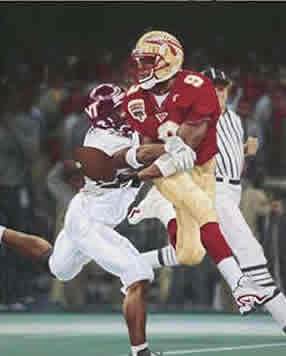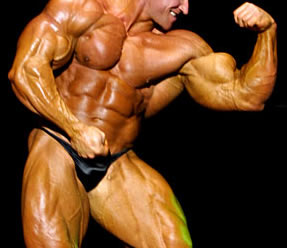Sports Science
The right muscle for the right sport
It is now generally recognized that skeletal muscle cells do not exist in three discrete types. Muscle cells exhibit a certain plasticity (1) that enables them to respond to exercise which changes their characteristics from one type to another. However, for simplicity we will look at humans as having
three different types of muscle cells. Each type of cell has
unique properties and functions in different conditions. Each person
has a genetically predetermined proportion of muscle cells of each type, which, as mentioned earlier, can be made to change according to exercise . This is why some athletes can perform, naturally, better at sprint training
and grow bigger muscles and others can run for a long time without fatigue.
There is evidence to suggest that muscle cells can be slightly modified
with specific exercise routines. To know what sport an athlete is best
suited to we must first examine the proportion of slow-twitch and fast-twich
fibers in their muscle. Only then can a coach develop training routines
that fully extend the athletes skills and ability.

Although there are two types of fast-twitch fibers, for simplicity, we will look at fast-twitch fibers in general. Unlike slow-twitch fibers, fast-twitch fibers are very sensitive to fatigue and are used for short anaerobic, high force production activities, such as sprinting, hurdling, jumping, and weight training. These fibers are also capable of producing more power than slow-twitch fibers. Energy for contraction comes from a process called anaerobic respiration which involves the partial breakdown of glucose. This energy source is available when exercise is vigorous and intense and oxygen is scarce. It lasts only for a minute or two.

The proportion
of each fiber in an athlete's muscle plays a major role in developing
power and endurance. For example, an athlete with a high proportion
of fast-twitch fibers will not be able to perform as many repetitions
with a given weight as an athlete with a high proportion of slow-twitch
fibers. The athlete with a high proportion of fast-twitch fibers will
not be able to achieve a high level of muscular endurance. Conversely
the athlete with a high proportion of slow-twitch fibers will not be
able to lift heavy weights or sprint as fast as an athlete with a high
proportion of fast-twitch fibers and hence will never achieve the musculature
and power of an athlete with a high proportion of fast-twitch fibers.
The proportion of fast-twitch
fibers can change even amongst athletes of the same sport. For example,
not all marathon runners will have the same percentage of slow-twitch
fibers. Some sprinters can perform 10 X 200 metres in a workout while
others tyre after 8 repetitions. The difference can be related back
to the percentage of fast-twitch fibers. Knowing the percentage of each
fiber type for each athlete the coach must decide whether to give the
athlete longer rest periods or few repetition in a given workout.
Training a muscle with a high percentage of slow-twitch fibers for explosive power will not increase the number of fast-twitch fibers in the muscle. It is important to note that an athlete, through appropriate training, can not change a slow-twitch fiber into a fast-twitch fiber or vice-versa. However, the size of the fast-twitch fibers will increase while the slow-twitch fibers will decrease in size due to selective hypertrophy.
The sport of body building is an example of selective hypertrophy. A body builder trains so that he overloads the fast-twitch fibers in his body increasing the size of fast-twitch fibers while reducing the size of slow-twitch fibers. Even though an athlete may have 50% fast-twitch fibers the cross sectional area of fast-twitch fibers may increase, depending on the intensity of the workout, to as much as 75%. The change will lead to a lack of endurance but greater power. Body builders increase muscle mass because the fast-twitch fibers have a greater size than slow-twitch fibers.

Peter has big
muscular legs. He wants to decrease the size of his thighs.
Suggest a training routine and a diet.
Charlie suggested
exercise utilizing high repetitions of between 70 to 100 per set.
Why will such high repetitions decrease muscle mass?
Why would a rugby player find it hard to run a 10 km race while a marathon runner finds it hard to sprint, at high speed, over a distance of 20 m with the same amount of power generation as the rugby player?
Reference material
1) www.the-aps.org/publications/classics
ESSAYS ON APS CLASSIC PAPERS
Nature vs. nurture: can exercise really alter fiber type composition in human
skeletal muscle?
Christopher P. Ingalls
Department of Kinesiology and Health, Georgia State University, Atlanta, Georiga 30303